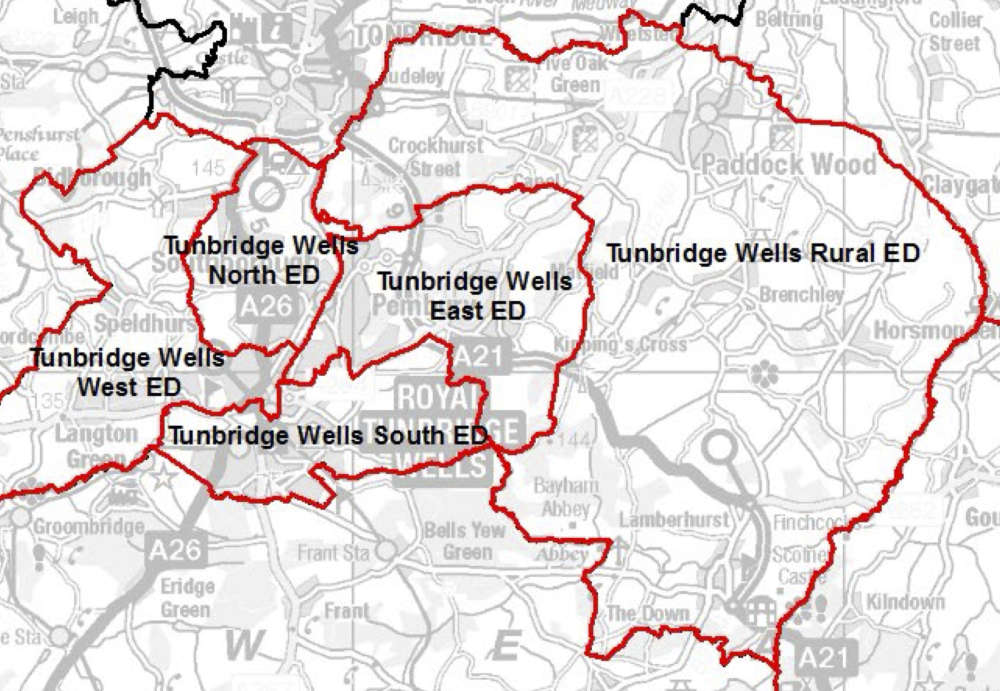
Will we see the loss of some green belt land in Sevenoaks, Tunbridge Wells and across Kent?
Within only days of being elected, Labour’s new Chancellor Rachel Reeves has stated the “urgent” need for planning reform and for new homes on ‘grey belt’ land, as well as more onshore wind farms.
With so much green belt land in Kent, we look at whether the new government will soon decide some of it is ‘grey’ and get building…
Huge swathes of Kent consist of land which is green belt or otherwise protected, such as nature reserves and National Landscapes, formerly known as areas of outstanding natural beauty (AONBs).
About a fifth of the county’s land area is designated as Metropolitan green belt – designed explicitly to constrain the urban sprawl of London into the home counties by making it much harder to get permission to build.
A further 23% falls within the Kent Downs National Landscape and 10% is the High Weald National Landscape – with some overlap between them and the green belt.
But however green and pleasant the land is, the country is in a housing crisis. Local authorities are responsible for getting homes built and the new government is promising to make them do it one way or another.
The politics of planning
Labour’s manifesto promised to “get Britain building again”, saying they will make sure 1.5 million homes are constructed over the next five years.
As part of this, local councils will once again be subject to strict mandatory targets for housebuilding.
In a speech on Monday, new Chancellor Rachel Reeves announced plans to reform the National Planning Policy Framework (NPPF) which governs housebuilding across the UK. The reforms are set to include “reviews of green belt boundaries”, she explained.
“These will prioritise brownfield and grey belt land for development to meet housing targets where needed,” the Chancellor added.
The Labour manifesto described the ‘grey belt’ as “lower quality” parts of the green belt.
What major developments are planned on Kent’s green belt?
District and borough councils must write “local plans” every few years. These are blueprints which determine housebuilding in their areas over long periods of time and show the government that they are planning to build the homes they need.
In this process, developers and landowners come forward to suggest land for particular kinds of development – sometimes in the green belt.
Sevenoaks District Council’s (SDC) jurisdiction is 93% green belt and planning officers have said the area has an “acute” housing shortage.
With the leafy, upmarket district now drawing up its local plan until 2040 – one proposal has drawn more ire than any other, sparking a huge campaign against it.
Pedham Place is proposed to be a new settlement of 2,500 homes entirely within the green belt near Junction 3 of the M25 and the villages of Eynsford, Farningham, Horton Kirby and South Darenth.
Nearby, and also in the green belt, rugby giants Wasps have expressed interest in building a 28,000-seat stadium, a training facility and a hotel.
SDC is currently drafting its final version of its local plan based on feedback to the first public consultation they ran on it.
Once they draft an altered version, later in the year it will go to the government’s Planning Inspectorate, which gets the final say and can propose changes to it.
Tunbridge Wells Borough Council (TWBC) is also currently working on its local plan. The borough is 22% Metropolitan green belt.
The council proposed that 5% of its green belt could be released for development.
Initially, an entirely new “garden village” of 2,100 homes at Tudeley, near Capel in the green belt, was put forward in the plan.
However, in December last year this was dropped after the then-government’s Planning Inspector said TWBC should have better explored other sites which would be less harmful to the green belt.
When asked for specifics of how planning rules will change, the newly-renamed Ministry of Housing, Communities and Local Government told the Local Democracy Reporting Service full details will come in the summer.
But with so much official green belt in Kent, the new government could be set to designate some of it ‘grey’, and make whole new villages in the countryside a more common proposition in local planning.
What do those in favour say?
Those who want to see more housebuilding hail the plans as “absolutely right”.
“Some green belt land is not actually greenfield but brownfield – it has been developed previously,” said Freddie Poser, director of the pro-housing campaign PricedOut.
“The housing crisis has reached such a level that it is a critical priority to fix it, and Labour have announced they will include reviewing low-quality bits of the green belt, to allow housing on parts of it.
“This is absolutely right and a step in a positive direction towards getting more homes built near thriving cities.
“Kent contains a large amount of London’s green belt, the vast majority of which we would expect to remain undeveloped. But parts of it will necessarily be lower quality, or closer to public transport than others, and it is right that the government strikes a new balance to allow these areas to be brought forward for housing.”
Mr Poser expects little of Kent’s National Landscapes will be built on – but it will be “crucial” for more homes to be constructed on parts of the Metropolitan green belt closer to London to ensure people can “find affordable places to work, near high quality jobs”.
What about those against?
Others aren’t so keen on Labour’s plans.
Cllr Stuart Jeffery (Green), leader of Maidstone Borough Council (MBC), says the return of mandatory housing targets for local councils is “a bit of a joke”, as the targets “have never really gone away”.
MBC’s jurisdiction is only 1% green belt designated, but it has seen its fair share of controversial large-scale developments.
When MBC met to approve their local plan in March, protestors gathered at the town hall to demonstrate against the proposed new settlements of 5,000 homes at Lenham Heath and 2,000 at Lidsing.
Cllr Jeffery continued: “The 1.5 million new homes to be built by the end of the new Parliament translates down to about 1,000 a year [locally] which is what Maidstone council has been building so there is no obvious change to Maidstone.”
The national target works out to 300,000 built per year, which is officially the previous Tory government’s target too – though it was never met.
Cllr Jeffery also argues that more government involvement in local planning “doesn’t spell a great deal of promise for local democracy for local people”.
“That rather sounds like a top-down approach. Overall it does sound very much like central government control rather than Maidstone council,” he said.
“It only ever leads to trouble. You have to take people with you.”
Meanwhile, the Campaign to Protect Rural England says clarity on what Labour means by the ‘grey belt’ is urgently needed.
The campaign group’s planning policy manager Lizzie Bundred-Woodward said: “The green belt is the countryside next door for 30 million people in towns and cities across the UK.
“It is crucial for food security, nature recovery, climate change mitigation alongside mental and physical wellbeing.
“We’ll always advocate for recycling previously developed land rather than eating away at the green belt.”
What about onshore wind farms?
The Chancellor also said Labour is “ending the absurd ban on new onshore wind in England”, with a view to getting more sites built.
Most wind turbines in the UK are out to sea. Kent already hosts one just off the coast of Thanet run by Swedish firm Vattenfall.
Producing a maximum output of 300 megawatts, when it opened in 2010 it was the largest offshore wind farm in the world.
There is only one onshore wind farm in Kent consisting of 26 turbines at Cheyne Court – deep in the Romney Marsh, west of Lydd.
There was a proposal by energy firm Ecotricity to open a second wind farm on the marsh at Snave, but after long-running opposition, it abandoned the plans in 2015.
However, the new Labour government says it will move to treat onshore wind farms as Nationally Significant Infrastructure Projects, “meaning decisions on large developments will be taken nationally not locally”, according to the Chancellor.
Some have called for the site of the scrapped Princes Parade development in Hythe to be turned into a wind farm.
However, council leader Cllr Jim Martin previously said the site was “too small and not deep enough”.
Source: Kent County Council

 Bassetts Farm
Bassetts Farm
 "Devastating" changes
"Devastating" changes
 Candidates Tonbridge
Candidates Tonbridge
 Candidates Tun Wells
Candidates Tun Wells
 Due to Open in 2028
Due to Open in 2028
 Vote on May 1
Vote on May 1
 Glare Concerns
Glare Concerns
 "More Efficient" Future
"More Efficient" Future




